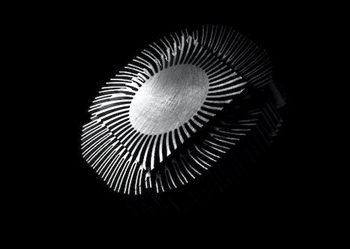Sounds are beautiful. Think of Beethoven or the sounds of birdsong. But the sound that we don’t want to hear at the wrong time, in the wrong place and at the wrong time it’s just noise. the noise that makes your life difficult and makes work, school or even sleep difficult. If you’re suffering from an issue with noise the most efficient solution is to eliminate the sound source.
However, sometimes that’s not possible. If you live close to an area of construction or a loud club or nightclub or have an elderly, uninvolved neighbour who is playing the TV on your wall in full blast turning the volume down can be difficult work.
You might have the opposite issue: maybe you’ve got an activity or hobby that’s loud; you may be a DJ or musician and would like to shield your neighbours from the noises that you create. In any case you’ve probably been directed towards the idea of soundproofing.
What exactly is it and how does it function? Let’s look at it in more detail! If there are glass windows in your home theatre, the most important thing to ensure is to make them soundproof. What can acoustic windows do to absorb sound and help in noise reduction?
The Science Behind Soundproofing
There are occasions where it’s helpful thinking like an engineer and solving problems related to noise is certainly one of the instances. Knowing the science behind sound is the best method to minimise the amount of acoustic glass cost.
Sound is a form of energy produced by the vibration of objects. The energy must be transported somewhere, so it moves outwards, away from the source of sound creating objects and air we breathe with us until the remnants of the energy is absorbed by our ears.
In our ears, the air is also vibrating, bouncing on our eardrums, stimulating hair cells that are located in our skulls and registering the sound within our brains. In short, sound begins with a source, is transported through a variety of media, reaches our ear and lights up our brains. If you wish to stop it from happening, it is necessary to break the sequence of events somewhere in the middle.
Acoustic Window Glass
Noise cancellation is a crucial element in the theatre and the glass port is a significant factor in the amount of the noise. This is the reason why many owners of theatres prefer Acoustic windows in the present. Windows with acoustic ports have been proved to be efficient in making noise less.
The Acoustic Port Windows
The name suggests the primary function of acoustic windows is to absorb sound. For large structures, control of sound must be maintained in all cases because if the sound is effectively absorbed or controlled, it will create a huge nuisance for the people who live within. Windows made of acoustic double glazing have the exclusive capability to regulate sound due to their higher degree of sound acoustic efficiency.
Control Of Sound And The Type Of Port Windows
It is evident that sound control in big structures can be achieved only with the integration of windows that are acoustic. But, the addition of acoustic port windows on their own won’t reduce the noise. The specific kind of windows must be used in every building to improve control of sound.
The composition of the acoustic elements that are used in port window glass needs to be considered with more attention. Here are a few typical types of acoustic window specifically designed to provide sound absorption.
Acoustic Port Glass
Dual-pane windows are utilised in a myriad of situations. They are not just effective in sound control, but also for their durability. Dual pane acoustic window windows can be found in numerous locations.
One of the reasons people choose these windows is due to the aesthetic appeal in them. We recommend 6 – and 10-mm thickness of the dual pane window glass. The noise is blocked due to the different thicknesses that vibrate at different rates and absorb each other from sound waves.
Characteristics Of Treatment
Acoustic double glazing Treatment is essential to studios because we wish to stop standing waves. When a standing wave occurs it affects how the frequencies respond in listening rooms and recording studios.
In addition, with the correct acoustic treatment we can reduce or absorb the sound within the room, thereby avoiding echo flutter and enhance the stereo image while recording process is kept from spilling into or into the room. An effective Acoustic treatment can reduce the time of reverb in a larger space and lessen the modal ringing of the small space.
Materials
With the correct and appropriate tools and equipment in constructing the studio, it will aid in recording and mixing your music in a proper way. A well-designed room, with good Acoustics can be described as a place where you can hear the sound through the speakers and hear it in the most natural way possible.
A studio that is good should have excellent isolation and be as neutral as is possible to allow you to be able to perceive the finer particulars such as stereo positioning correctly. The music we mix and equalise could sound great and has the potential to sound good in other rooms too. The control of sound in rooms is done through specific acoustic treatment.
Materials are the basis for the most effective acoustic properties in regards to isolation and diffusion However, since there are numerous methods and various materials to accomplish this, we strive not to use too many specific materials because they could cost more than you’re willing to pay for. Instead, use efficient techniques for construction using common materials, and what is suitable and cost-effective.
Light Sound Blocking
Curtains that are soundproof or acoustic can be one of the most easy-to-install options to block out outside sound. The curtains are heavy and have an insulating liner which acts as a shield against noise light, heat, or cold that enters through the windows; however they are better in blocking the sun and temperature outside as opposed to noise.
The curtains also serve to block out sound by reducing echo and reverberation. Acoustic curtains are ordered to fit any size doorway or window, or be utilised as a partition in a room. Fabric choices include suede velvet, microfiber and velour.
Alternative To Curtains
The idea behind them is to cut down on the noise of aircrafts and traffic. Acoustic shutters are a patent-pending item providing a different method of window sound insulation. The plantation-style shutters claim to cut down the noise by 25-50 decibels. They can be constructed to any size, and finished using any colour paint or stain, and crafted to accommodate French doors, sliding glass doors.
Summary
The ideal method of soundproofing the room is to create an area smaller than the room and block sound from moving from one room to the next. It is also referred to as “room within the room” or the acoustic decoupling.
The rooms are constructed from strong, solid materials. However, the rooms are not close to one another or sound could travel through. Instead, the space is normally supported by tiny clips (such as RSIC(tm) Resilient Sound-Isolation Clips, or WhisperClips) and the walls are covered in sound-absorbing material.















